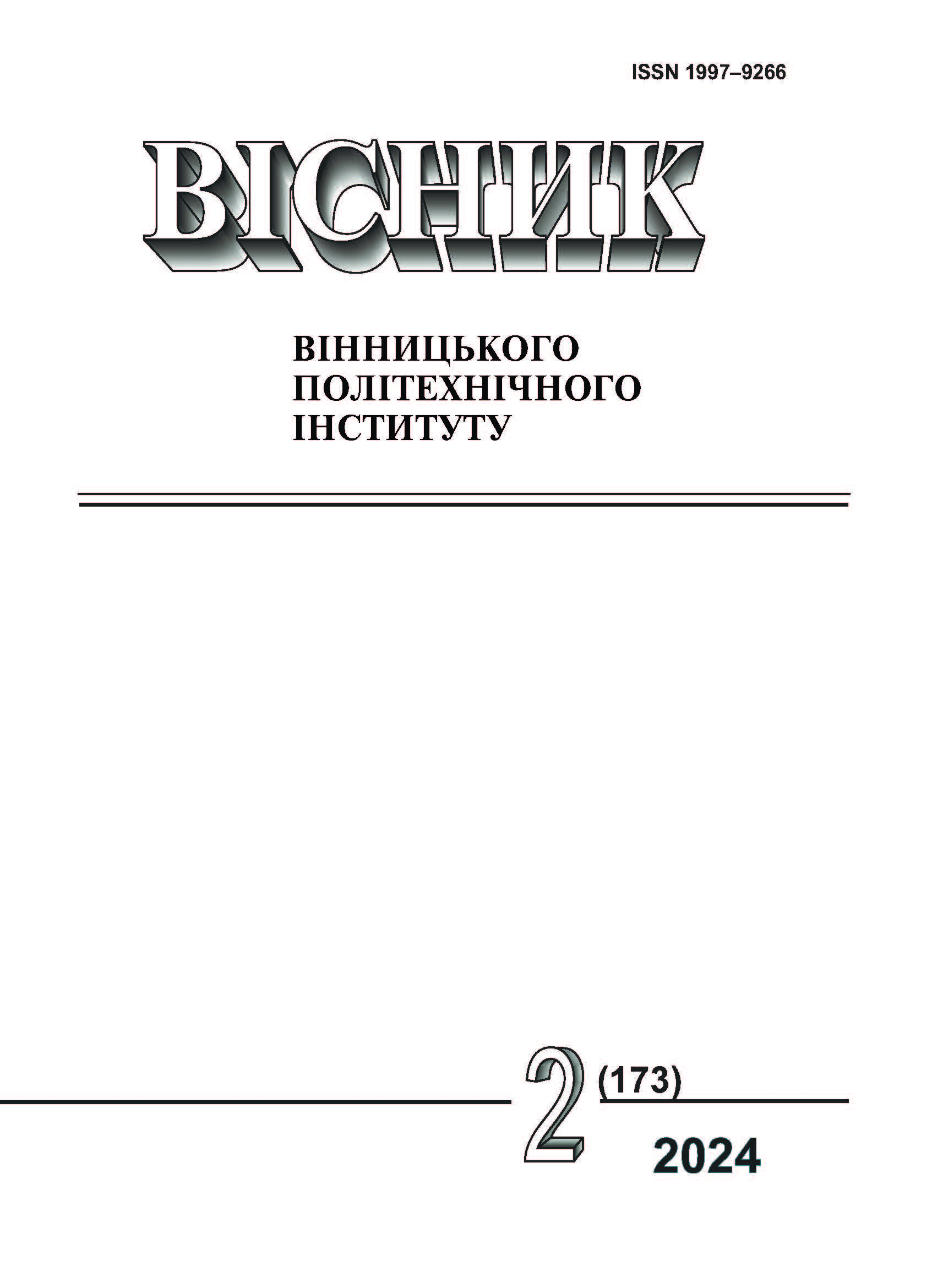Mathematical Model for Measuring Transformation of Vibration Displace-ment by Capacitive Sensor into a Time Interval
DOI:
https://doi.org/10.31649/1997-9266-2024-173-2-6-13Keywords:
capacitive sensor, vibration displacement, conversion function, sensitivity, mathematical modelAbstract
In accordance with the international research experience, the maximum allowable normalized vibration displacement values for each group of machines from 15 kW to 500 MW to their respective vibration state are given. The importance of determining the nature of the vibration signal and choosing the appropriate tools for its evaluation is formulated.
The analysis of the sequence of the conversion of the vibration displacement into the output voltage by a capacitive sensor, which has a long measuring circle and therefore a large error compared to the direct measurement conversion of the vibration displacement into a time interval, was carried out.
Structural diagram and a mathematical model for measuring the conversion of vibration displacement into capacitor capacity are proposed. Analytical and graphical dependence of the capacity of the parametric sensor on the displacement of the plates under the action of vibration displacement in the justified range of their possible change from 20 to 120 μm was obtained. It was established that in this range of changes in vibration displacement, the capacity of the capacitor changes within such limits from 3 to 18 nF.
A mathematical model for measuring the transformation of vibration displacement into a time interval was obtained and a graphical dependence of the duration of the time interval τ on the change in the displacement a of the plates under the action of vibration displacement in the set range of movement of the capacitor plates from 20 to 120 μm was given. It is shown that the value of the time constant in this range varies from 100 to 325 μs.
A scheme of a capacitive measuring transducer of vibration displacement in a time interval and time diagrams explaining the principle of its operation are proposed. It is shown that the quantization error will not exceed 0.1 % during further measurement conversion into a binary code. The error from the insensitivity zone of the comparator is of the same order.
The use of such an approach will allow formalizing further research into the measuring channels of vibration monitoring systems of electromechanical systems and complexes.
References
В. В. Кухарчук, та ін., Моніторинг, діагностування та прогнозування вібраційного стану гідроагрегатів, моногр. Вінниця, Україна: ВНТУ, 2014, 169 с.
M. H. M. Ghazali, and W. Rahiman, “Vibration Analysis for Machine Monitoring and Diagnosis,” A Systematic Review Hindawi, Shock and Vibration, vol. 2021, Article ID 9469318, 25 p. https://doi.org/10.1155/2021/9469318 .
ДСТУ ГОСТ ИСО 10816-3:2014 Вібрація. Контролювання стану машин за результатами вимірювання вібрації на необертових частинах. Частина 3. Промислові машини номінальною потужністю більше ніж 15 кВт і номінальною швидкістю від 120 хв-1 до 15000 хв-1 (ГОСТ ИСО 10816-3-2002, MOD; IDT).
С. Ш. Кацив, і В. В. Кухарчук, «Застосування вейвлет-перетворень в задачах моніторингу та вібродіагностування машин та обладнання,» Наукові праці ВНТУ, № 3, с. 12-18, 2009.
ADXL50AH Datasheet One Technology Way, P. O. Box 9106, Norwood, MA 02062-9106, U.S.A.
В. В. Кухарчук. Основи метрології та електричних вимірювань. Частина II, консп. лекцій. Вінниця, Україна: ВНТУ, 2020, 154 с.
Downloads
-
PDF (Українська)
Downloads: 80
Published
How to Cite
Issue
Section
License

This work is licensed under a Creative Commons Attribution 4.0 International License.
Authors who publish with this journal agree to the following terms:
- Authors retain copyright and grant the journal right of first publication.
- Authors are able to enter into separate, additional contractual arrangements for the non-exclusive distribution of the journal's published version of the work (e.g., post it to an institutional repository or publish it in a book), with an acknowledgment of its initial publication in this journal.
- Authors are permitted and encouraged to post their work online (e.g., in institutional repositories or on their website) prior to and during the submission process, as it can lead to productive exchanges, as well as earlier and greater citation of published work (See The Effect of Open Access).





